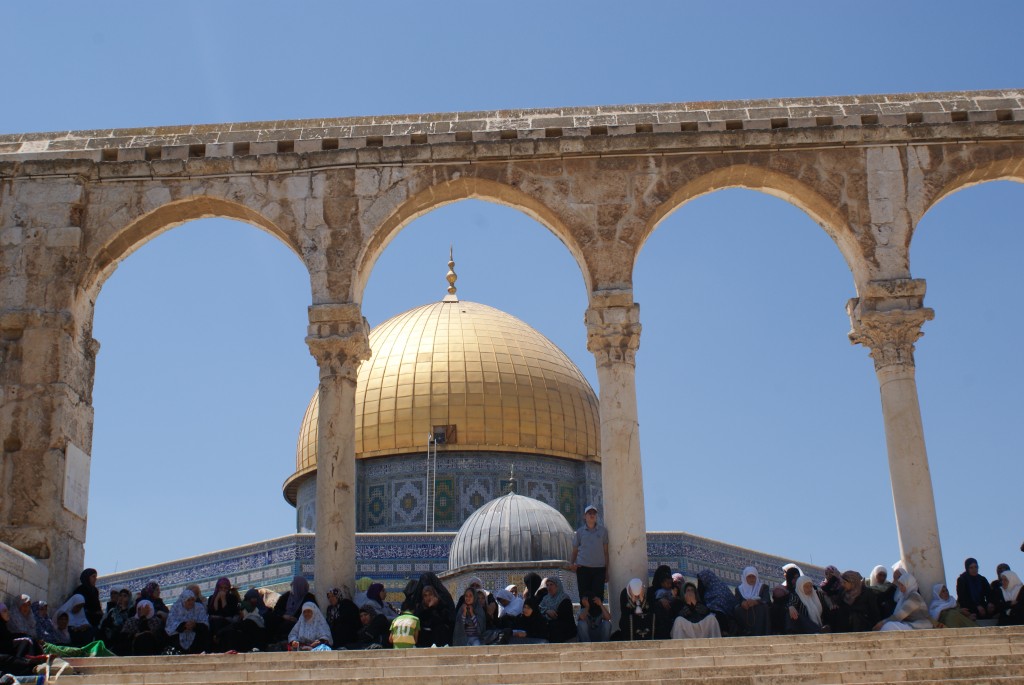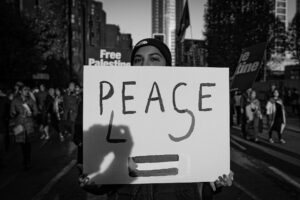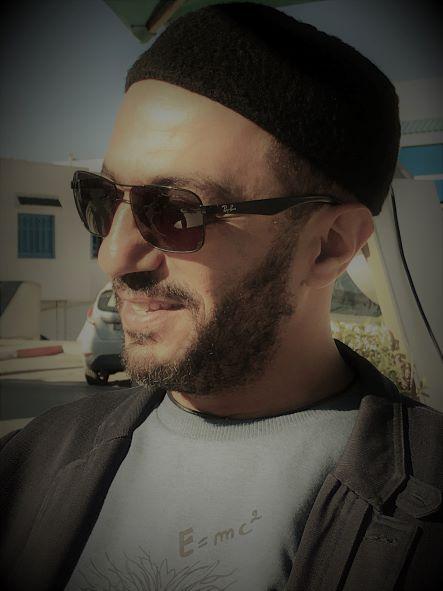Al-Aqsa/Temple Mount: Ground zero or common ground?
By Khaled Diab
Jerusalem's holiest site is again provoking tension and controversy. But could it also bridge the chasm between Israelis and Palestinians?

Wednesday 12 March 2014
The Dome of the Rock dominates the Jerusalem skyline with majestic splendour. To the untrained eye, this architectural gem, which floats resplendently above the old city's cacophony, seems like a sanctuary of peace and tranquillity, a retreat for meditation and introspection.
But this Noble Sanctuary, as it is known to Muslims, or Temple Mount, as Jews refer to it, has been anything but peaceful and has been the symbolic heart of the Arab-Israeli conflict's religious fault line for much of the past century.
Even today it remains a major flash point. In fact, the 21st century got off to an inauspicious and bloody start when a provocative visit by Ariel Sharon to the site caused simmering tensions to overflow into the costly second intifada.
And these tensions show no sign of abating. Last week, a group of Jewish extremists – led by the messianic rabbi, Yehuda Glick, who is part of the tiny fringe movement which fantasises about building the Third Temple – stormed the complex.
More troubling than the lunatic fringe is the Knesset debate on Israeli sovereignty over the Temple Mount, sponsored by the far-right parliamentarian Moshe Feiglin.
This has not only led to clashes in the Noble Sanctuary, but has also prompted the Jordanian parliament to vote to expel the Israeli ambassador and recall its own if the Knesset takes further action.
It could also jeopardise Israeli-Jordanian ties. “If Israel wants to violate the peace treaty in this issue, the entire treaty, its articles, details and wording will be put on the table,” Jordan's Prime Minister Abdullah Nsur cautioned. For his part, Palestinian President Mahmoud Abbas has rejected the notion of shared sovereignty as part of any eventual peace deal.
Nevertheless, it would do us well to recall that, for all Israel's many failings, it is possibly, at least for now, the only conqueror of Jerusalem that has not converted the religious identity of the site, despite the best efforts of extremists.
Many in Israel, the Arab world and internationally fear the consequences of this “powder keg”. “Using religion as a pretext to impose sovereignty on historical places of worship threatens to plunge the entire region into great conflict and instability,” Hanan Ashrawi, the PLO's spokeswoman, warned.
Given this widespread apprehension that this seismic shift in the Noble Sanctuary's status could become the ground zero, or epicentre, of a region-wide conflict, many today will find it hard to conceive, or even believe, that there is historic evidence to suggest that Muslims and Jews once prayed together on the Temple Mount.
Following the surrender of Jerusalem to the Arab armies, Omar Ibn al-Khattab, Muhammad's second successor, or caliph, allowed Jews, who had been expelled by the Byzantines, back into Jerusalem.
“There is strong evidence to suggest that the Jews were not only permitted to return to Jerusalem, but that the Muslims allowed them to worship at their side on the Temple Mount,” wrote Francis E Peters, a professor of Middle Eastern and Islamic Studies at New York University.
Some other historians agree. “We know that Omar welcomed the Jews back in Jerusalem, that he and the early caliphs allowed Jewish worship on the Temple Mount and that the Jews did not leave again as long as Islam held sway,” Simon Sebag Montefiore wrote in his comprehensive biography of Jerusalem.
Omar ordered the cleaning of the Temple Mount, which had been used as a rubbish tip by the Byzantines, and permitted Jews to worship there. One convert, Rabbi Kaab al-Ahbar, even located the foundation stone for the Muslim conquerors.
It is even possible that the caliph allowed the Jews to construct a synagogue on the mount and appointed a Jew as the first governor of Jerusalem, according to the 7th century Armenian historian Sebeos.
This permissiveness and interfaith interaction was in keeping with Omar's attitude – as well as Muhammad's – towards religion for the People of the Book. This was illustrated by the story of his refusal to pray in the Holy Sepulchre so that future Muslims would not use it as an excuse to convert it into a mosque – which they did on the actual spot where he prayed nearby, and in numerous other instances over the centuries.
This tradition of tolerance was continued by the Umayyads, who, despite having introduced the concept of royalty into hitherto egalitarian Islam, were arguably among the most pluralistic Muslim dynasties wherever they set up shop, including in Andalusia.
Muawiya ibn Abi Sufyan, the founder of the dynasty and a born mover and shaker, was revered by local Jews. Despite his relentless expansionism, Muawiya was also famed for his belief in dialogue and compromise. “Even if but one hair is binding me to my fellow man, I don't let it break,” he asserted.
When the Umayyad Caliph Abdel-Malik ibn Marwan built the Dome of the Rock, Jews were filled with elation. Some even believed that this Islamic shrine was the third temple. For a century, Jews had full access to this holiest of sites, until the reign of another Umar, the dogmatic Umar Ibn Abdel-Aziz.
Is it possible today, in the supposedly more enlightened 21st century, for the Noble Sanctuary/Temple Mount to become a common ground, rather than a battleground, for Muslims and Jews?
Some religious Jews think so. “Religion is like nuclear energy: you can use it to destroy or to kill. You can also use it for peaceful purposes,” the late Rabbi Froman told me. “The Dome of the Rock or the Temple Mount can be a reason to quarrel or a reason to make peace.”
Personally, I am sceptical that this religious edifice can work in isolation as a bridge to peace. This feeds into the illusion, or misconception, that the Israeli-Palestinian conflict is a religious one. While religious extremists do often exercise what I call the “God veto”, for both sides, excluding the fanatical fringes, the conflict is about worldly affairs.
It is in this frame that we must view the Noble Sanctuary/Temple Mount. It is the entire conflict writ spiritual. This prime piece of sacred real estate contains many of the elements bedevilling the entire quest for a peaceful resolution: control of and sovereignty over the land, national identity, the relationship between Israelis and Palestinians, not to mention the status of Jerusalem.
Until these issues are resolved, it is highly unlikely that Muslims and Jews will find the necessary will to compromise to hammer out a formula for sharing this holiest of locations. Furthermore, it would be a grave, reckless and dangerous error for Israel to think it can unilaterally take action.
But what history can teach us, and what is often overlooked in the heat of conflict, is that Jews and Muslims were, for many centuries, friends and allies and that they once stood side by side as brothers in faith on Jerusalem's most hallowed ground.
—
Follow Khaled Diab on Twitter.
This article first appeared in Haaretz on 10 March 2014.



thats a great piece… and it is all so very sad.
More debate on this article:
https://www.facebook.com/haaretzcom/posts/10152213968382707?stream_ref=10
http://myrightword.blogspot.co.il/2014/03/diab-playing-dumb.html